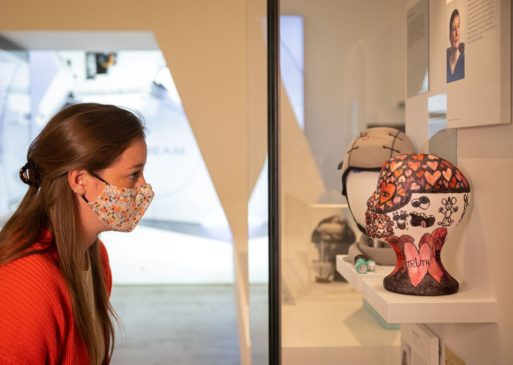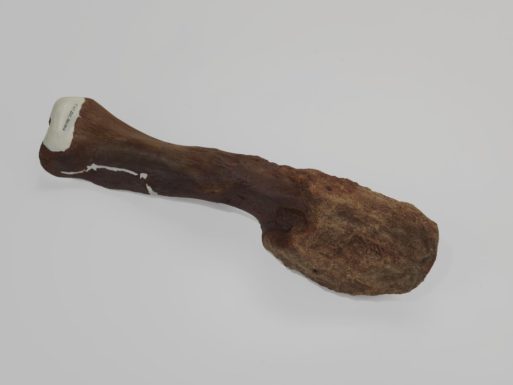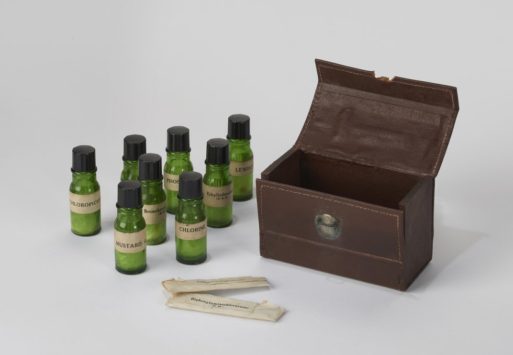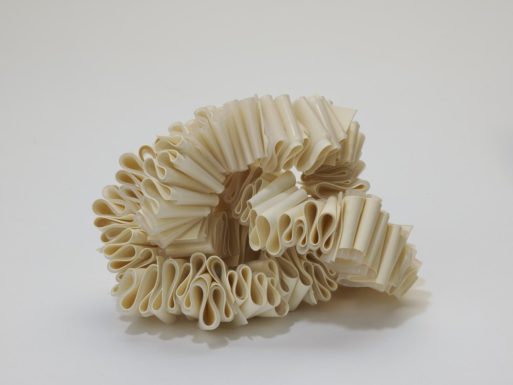
Visitors to “Cancer Revolution” view a sculptural part of the exhibit. Credit: Science Museum Group
This month, the Science Museum at London wraps up their innovative program, “Cancer Revolution: Science, Innovation and Hope.” Part art exhibit, part history museum, part narrative storytelling, this showcase marks one of the first major exhibits on cancer in recent memory. The American Cancer Society shares that almost 17 million people in the U.S. have survived cancer, and an average of 1,670 Americans die from cancer each day. It is the second most common cause of death in the U.S., exceeded only by heart disease. Clearly, this disease has had wide implications throughout society and almost everyone knows someone intimately impacted by cancer.

A visitor examines cancer patient Sarah’s wig stand decorated by her daughter
Credit: Science Museum Group
Despite this ubiquity, or perhaps because of it, presenting an exhibit on the vast history, treatments and impacts of cancer had not been attempted in any major way before “Cancer Revolution.” The curator, Katie Dabin, spoke with the New York Times about her desire for the exhibit to be not just informational, but intimate and almost reassuring:
“There’s this perception that cancer is a modern disease, and very uniquely human, and that leads to a lot of people blaming themselves when they’re diagnosed: ‘What have I done?’ But cancer affects all multicellular life. It’s a disease of cells and unfortunately when cells divide, on occasion, that process goes wrong.”

The shinbone of a centrosaurus with a malignant osteosarcoma tumor.
Credit: Science Museum Group
“Cancer Revolution” presents a history of cancer across all life forms, from a cancerous tumor found fossilized in a dinosaur shin, to what cancer looks like in trees (plants can and do get cancer, although it looks and spreads differently than how it presents in animals). The exhibit also offers a look at the history of various cancer treatments, from chemotherapy that developed from World War I’s mustard gas, to early radiation equipment, and now to cutting edge 3-D models of tumors for risky surgeries and modified genetic therapies. The exhibit succeeds in showing how far we have come in treating cancer and leaves one hopeful for the future.

Chemotherapy was first developed following observations about poisonous gases like mustard gas after World War I.
Credit: Science Museum Group
Perhaps even more importantly, “Cancer Revolution” manages to present not only the historic and scientific aspects of cancer, but it also focuses on the impact in human lives. The exhibit includes art made by and for people going through cancer treatments, from abstract art pieces to decorative wig stands to tokens of well wishes. A true testament to the resiliency of the human body and spirit, the exhibit humanizes and celebrates the cancer patient’s journey.

Art created by cancer patient Amy during her treatment: “Creating artworks while having cancer made me feel empowered.”
Credit: Science Museum Group
For those of us who can’t make it to London, we can only hope that this exhibit ends up on a worldwide tour one day. Until then, it can provide inspiration to help us find ways to honor those in our own lives who have dealt with cancer.

 “Cancer Revolution: Science, Innovation and Hope”
“Cancer Revolution: Science, Innovation and Hope”


 Our Annual Seven Holiday Gifts for Someone Who Is Grieving, 2024 Edition
Our Annual Seven Holiday Gifts for Someone Who Is Grieving, 2024 Edition
 “Making Mobiles” by Karolina Merska
“Making Mobiles” by Karolina Merska
 “Hands Up to the Sky” by Michael Franti & Spearhead
“Hands Up to the Sky” by Michael Franti & Spearhead














